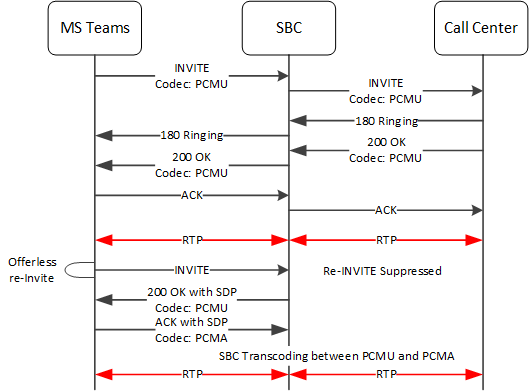Call Flows for INVITE Suppression
This section provides categories of call flows within which the ESBC suppresses INVITEs from transmission out the egress realm to reduce traffic in that realm. The call flows present an MS-Teams environment that initiates and receives calls to a call center and supports a set of applicable operations.
This section displays signaling detail on hold, transcoding, replaces and offerless INVITE operations within which the ESBC suppresses INVITEs.
Hold and Resume Call Flows
In this first call flow, the ESBC supports a call from the call center to the MS-Teams deployment within which the Teams station temporarily puts a call on hold. The ESBC suppresses extraneous INVITEs that occur when the call goes on hold and resumes. In both cases, the ESBC responds locally to the MS-Teams station to maintain transaction integrity. In addition, this flow shows that you have configured and properly triggered music on hold to the call center while waiting for the RTP to resume.
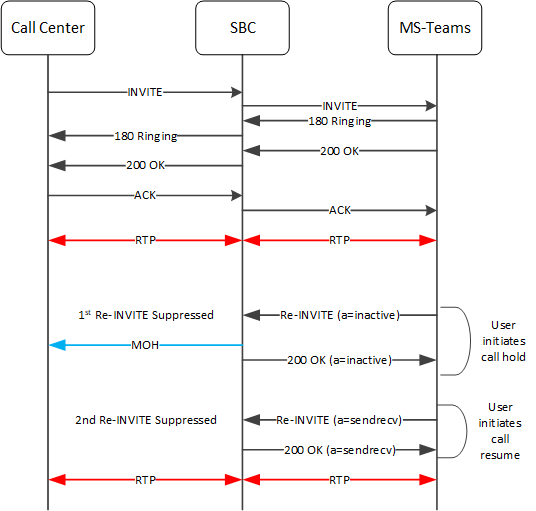
This call flow performs the same function as the first flow with the exception that the call starts on the MS-Teams side. The flow demonstrates the ESBC supporting the suppression function on behalf of the caller instead to the callee.
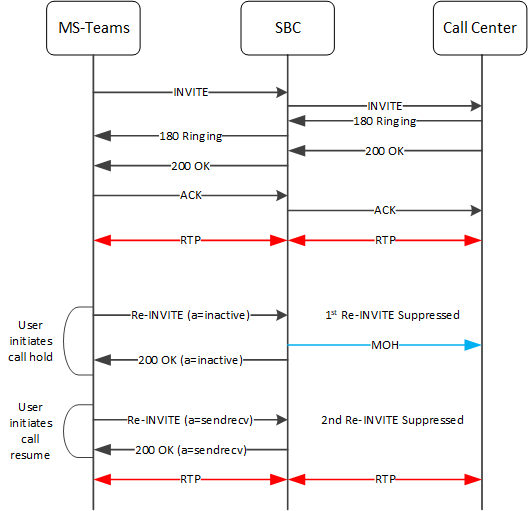
Transcoding
This call flow depicts the ESBC performing re-INVITE suppression when an MS-Teams station that has started a call initiates a codec change. The initial call had been proceeding using PCMA on both sides of the call. With the request of a codec change, the ESBC changes codec support between itself and the MS-Teams station from PCMA to PCMU. The calling station includes a call hold signal while the codec change takes place, and the ESBC issues music on hold during the change.
This codec change is not needed on the call center side, so the ESBC suppresses the re-INVITE and issues music on hold during the codec change. When the ESBC receives a resume re-INVITE, it stops the music on hold and transcodes from PCMU to PCMA transparently to the call center.
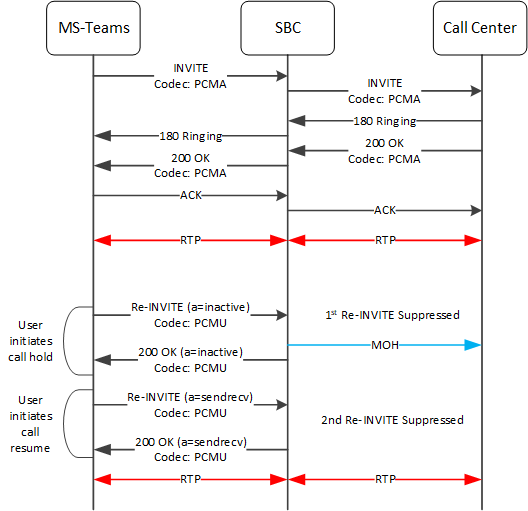
REPLACES Call Flow
This first replaces flow depicts a call initiated from a call center to an MS Teams endstation. The ESBC supports this call setup using its original dialog identifier. The scenario then includes the original MS Teams station replacing the dialog to transfer the call to a second MS Teams station. During the replaces process, the ESBC suppresses the INVITEs from the call center, including the hold, resume and replaces INVITEs. The ESBC accepts the new dialog to the seconds MS Teams station, and sends a BYE to the first.
After the replaces process, both legs of the ESBC maintain different call-id’s for the same call.
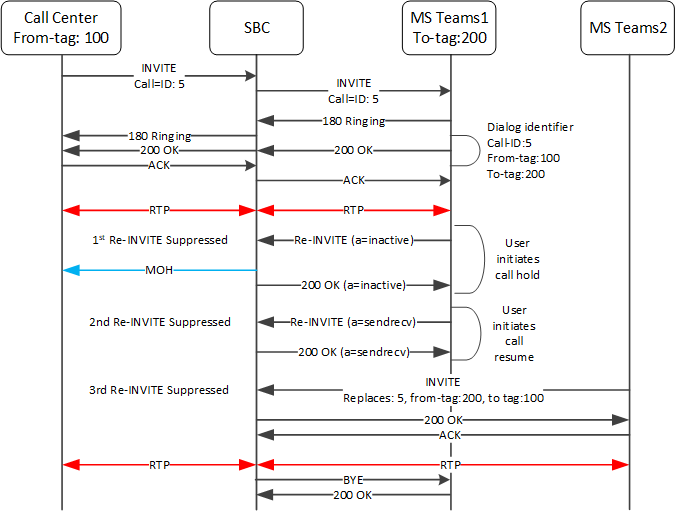
This next replaces flow depicts a call initiated from a call center to an MS Teams endstation, and includes a codec change resulting in the ESBC performing transcoding. In this flow the call center initiates a similar call to the first MS Teams station using PCMU.
Within the context of the replaces process, however, the second MS Teams station includes a different change. The ESBC suppresses this re-INVITE from the call center, accepts the media flow in PCMA. The result is a new media flow using transcoding.
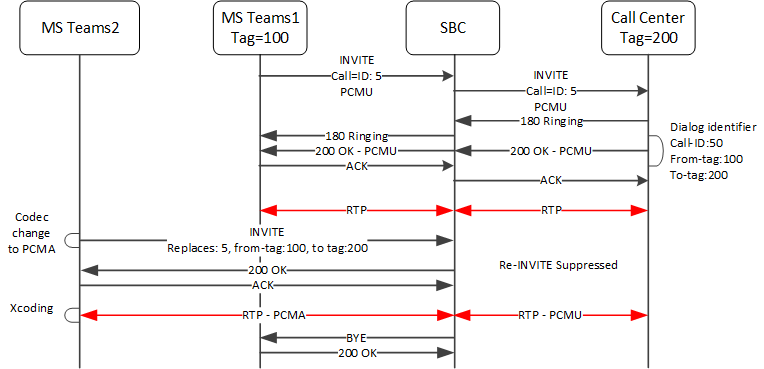
Offerless Re-INVITE Call Flows
In this call flow, an MS Teams station initiates a successful call to a call center. Subsequently, the MS Teams station issues a re-INVITE that does not include SDP. The ESBC suppresses this re-INVITE and responds to the MS Teams station with a 200 OK that includes SDP. MS Teams responds with an ACK and the RTP resumes.
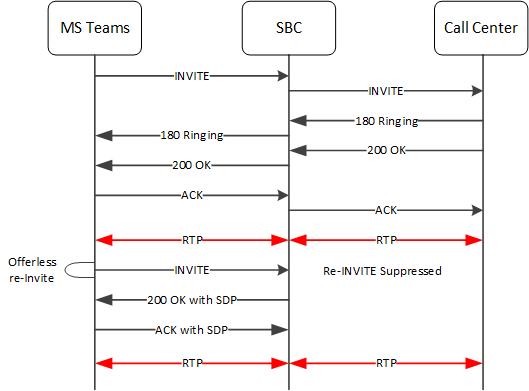
This second offerless INVITE example is similar to the first, with the exception that the final ACK presents a different codec. The ESBC responds to this situation by transcoding the PCMA RTP presented by the MS Teams station to PCMU, which was previously used by both legs of the call.
